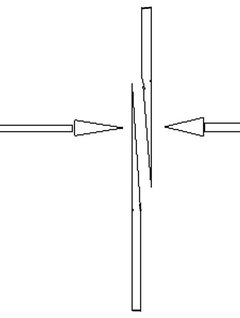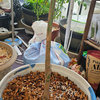Citrus Bark grafting method
Dave in NoVA • N. Virginia • zone 7A
10 years ago
Featured Answer
Sort by:Oldest
Comments (6)
poncirusguy6b452xx
10 years agoRelated Professionals
West Milford Landscape Architects & Landscape Designers · Middle River Landscape Architects & Landscape Designers · Severn Landscape Architects & Landscape Designers · Brentwood Landscape Contractors · McKinney Landscape Contractors · Anderson Landscape Contractors · College Park Landscape Contractors · McLean Landscape Contractors · Melrose Park Landscape Contractors · North Ridgeville Landscape Contractors · Pompton Lakes Landscape Contractors · Uxbridge Landscape Contractors · Tyngsboro Landscape Contractors · Reisterstown Landscape Contractors · East Norriton Landscape Contractorsponcirusguy6b452xx
10 years agoDave in NoVA • N. Virginia • zone 7A
10 years agoponcirusguy6b452xx
10 years agostslee
9 years ago
Related Stories

GARDENING GUIDESSpring Citrus Care Reaps Months of Sweet Rewards
Learn how to tend citrus trees in spring and ways to preserve their delicious fruit
Full Story
GARDENING GUIDESHow to Keep Your Citrus Trees Well Fed and Healthy
Ripe for some citrus fertilizer know-how? This mini guide will help your lemon, orange and grapefruit trees flourish
Full Story
LANDSCAPE DESIGNPretty Trees for Patios, Paths and Other Tight Spots
Choose trees for their size, shape and rate of growth — or shape them to fit your space. Here's how to get started
Full Story
EDIBLE GARDENSHow to Grow 10 Favorite Fruit Trees at Home
Plant a mini orchard in fall, winter or early spring to enjoy fresh-off-the-tree fruit the following year
Full Story
WINTER GARDENINGPruning Secrets for Exquisite Roses
Encourage gorgeous blooms year after year with this time-tested advice on how to prune your rosebush in winter for health and shape
Full Story
PETS6 Ways to Help Your Dog and Landscape Play Nicely Together
Keep your prized plantings intact and your dog happy too, with this wisdom from an expert gardener and dog guardian
Full Story
SAVING WATERHouzz Call: Are You Letting Go of Your Lawn?
Many facing a drought are swapping turf for less thirsty plantings. If you’re one of them, we’d like to hear about it
Full Story
BEFORE AND AFTERSSee 6 Yards Transformed by Losing Their Lawns
Wondering whether a turf lawn is the best use of your outdoor space? These homeowners did, and they found creative alternatives
Full Story
PETSPet-Proofing Your Home: A Room-by-Room Guide
Not all pet dangers are obvious. Keep furry friends safe and sound by handling all of these potential hazards
Full Story
GARDENING GUIDESTree Care: Common Tree Diseases and What to Do About Them
Learn to recognize trees that may be affected by diseases or pests so you can quickly take action
Full Story








Dave in NoVA • N. Virginia • zone 7AOriginal Author